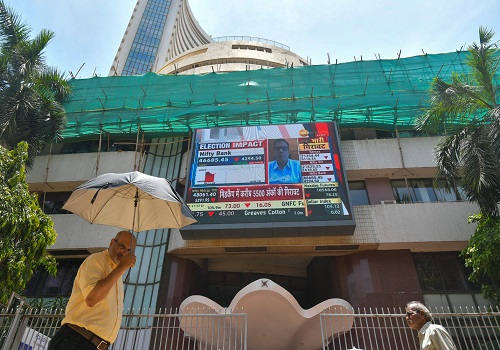Quote on Monthly Debt Market Outlook by Puneet Pal of PGIM India Mutual Fund

Below the Quote on Monthly Debt Market Outlook by Puneet Pal of PGIM India Mutual Fund
Fixed Income Commentary September 2025
Bond yields stabilised this month in contrast to the sell off witnessed over the last couple of months. Yields remained stable and range bound during the month. Attractive valuations led to some value buying helped along the way with some constructive comments from the Finance Ministry. RBI also, informally, checked with market participant the reasons for the rise in yields. This and attractive valuation led to value buying with the longer end yields coming down by 10-12 bps while the benchmark 10yr yield was flat for the month. The OIS curve has not risen much despite the rise in the bond yield curve.
This relative contradictory movement of the G-Sec and the OIS curves indicates that the rise in bond yields has more to do with adverse demand supply dynamics with the higher State Government Securities (SGS ) supply putting more pressure on yields at the longer end of the curve. The traditional demand from long only real money investors like insurance and pension funds have been lacklustre this year and this trend is likely to continue.
Bond market participants had given feedback to RBI to reduce the supply at the longer end of the curve and RBI accepted that demand as it reduced the supply of longer maturity securities in the borrowing calendar announced for H2. In the borrowing calendar announced for H2, RBI reduced the supply of longer tenure securities (15yrs and above maturity ) by 8% while increasing the supply of up to 10 yrs maturity by 8%. The 10 yr point of the curve is the most liquid and the supply there has been increased to 28% from 24%. While reducing the supply at the longer end of the yield curve can help stabilise the yields at the longer end, persistence of the adverse demand supply dynamics is likely to continue given the elevated SGS supply. There is a section of the market which is expecting RBI to conduct OMO purchases to take care of the supply overhang but we believe that such intervention may not be forthcoming immediately given the current structural liquidity surplus and OMO purchases by RBI have a higher probability in the last quarter of this financial year.
The fear in the bond markets regarding the cut/rationalisation of GST gave way to relief as the contours of the GST rationalisation become clear with an estimated fiscal impact of around INR 30,000 crore for the remainder of this fiscal. From a structural perspective, it can boost growth while lowering headline inflation. Thus it’s a positive for markets in general. CPI inflation came in line with market expectations at 2.07%, led again by lower food inflation, which remained flat on a YoY basis while “Core” inflation came in at 4.20% . The impact on inflation from the GST rate cuts is favourable and is estimated to be in the vicinity of 0.6%-0.8% though one has to wait and see the actual pass through impact. Arguably, the impact on core inflation should be higher. This has led to analysts expecting the FY26 inflation to average around 2.50% compared to RBI’s estimate of 3.10%. (As given in the August policy). Notwithstanding the expectations of lower inflation in this fiscal, the key for the bond markets remains the RBI’s estimate of inflation for FY27. At the start of the month, the Q1 CAD came in at 0.2% of GDP (lowest Q1 deficit since 2017) reflecting strong Global Capability Center (GCC) services export.
FPI outflows continued from equity with USD 2.78bn outflows, though the debt market received inflows to the extent of USD 1.03 bn. In CYTD 2025 so far, FPI inflows have been USD 6.12 bn in debt while the equity markets haver seen FPI outflows to the tune of USD 19.47 bn. INR remained under pressure, touching a life time low of 88.80 amidst trade tensions with US. The OIS curve has come down with a steepening bias this month with the 1yr OIS coming down by 6 bps to 5.46% while the 5 OIS coming down by 4 bps to 5.74%. Money market yields have hardened on the back of tight liquidity after the GST and advance tax outflows. The 3-month maturity CDs are trading around 5.90% while 1yr maturity CDs are trading 6.40%. Monsoons remained surplus with the cumulative rainfall being 7% above long-term average.
The US Fed reduced policy rates by 25 bps on the back of weakness in the labour markets though long end bond yields did not react much. Globally, bond yields remained elevated, especially at the longer end given the fiscal/debt concerns in UK and France. The BOJ held rates in a split decision though it surprised markets with a proposal for ETF sales of JPY 620 bn annually.
After the recent increase in bond yields In India, bond valuations have become attractive, especially at the longer end of the curve and in the SDL space. We expect RBI to come up with some steps to address the current dislocation in bond yields especially in the SDL curve as yields have gone up substantially in a short span of time. The current SDL yields are looking quite attractive for incremental investments from a long term perspective both from an absolute levels as well as relatively in respect of the spreads from G-Sec. Going ahead, we expect range bound movement in yields and expect the 10yr bond yield to trade in a range of 6.30% to 6.70% over the next couple of months. We expect the SDL curve to outperform over the medium term.
Above views are of the author and not of the website kindly read disclaimer






















